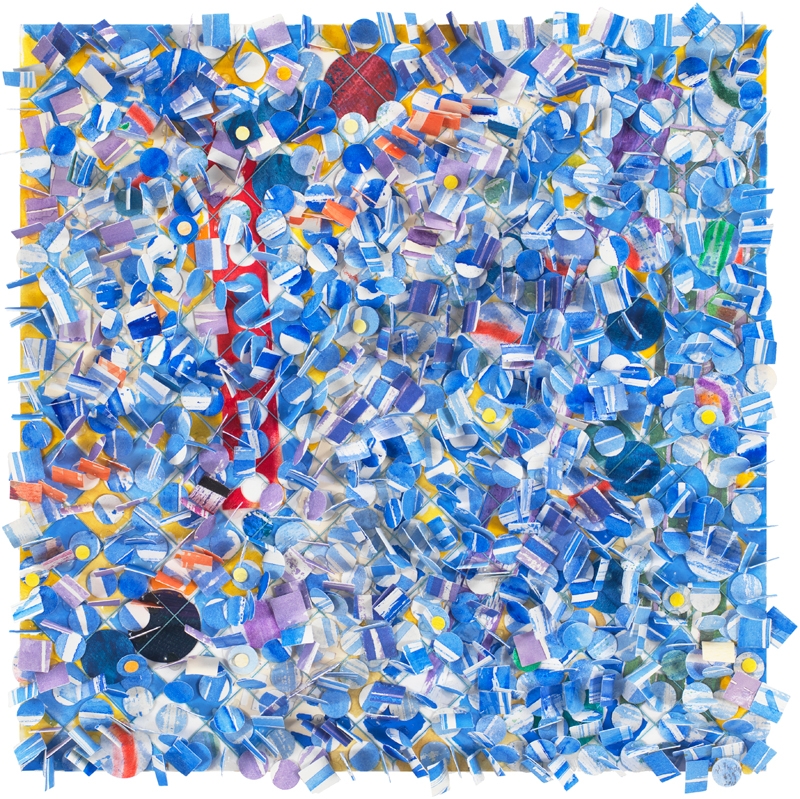With over thirty participating galleries and three days of events, Mayfair Art Weekend kicks off on Friday 28 June with Gallery HOP!, an evening of late viewings and special events at galleries in the area from 6-8pm.
In the lead-up to Gallery HOP!, ArtReview is publishing a specially themed guide each week, to help you decide what to see and where to start when the weekend kicks off. In lieu of ArtReview taking you round the galleries in person (we’re not sure you would want that), you can use these to navigate Mayfair’s busy art neighbourhood. Here’s tour number four, taking you from Grosvenor Street to Davies Street, and Brook Street across to Saville Row, and through Berkeley Square to Albemarle Street…
The Abstract Now Tour
It’s been a century since the idea of abstraction radically transformed the landscape of artistic expression, and many artists are still mining its depths and possibilities. So while Tour 2 took you from the origin of abstraction in early twentieth-century art to the postwar period, here’s a tour that will help you trace the way these various legacies continue to inform and inspire abstract practices, from the 1960s to the present day. The late Jon Schueler, whose paintings you’ll encounter on this tour and once rubbed shoulders with the Abstract Expressionists, may have been purposefully trite when he lucidly made this observation of himself and his peers: ‘We were all derivative… [We] couldn’t admit it… because originality was the password’. But ArtReview likes to think that that sort of introspection and removal of the self is quite fitting for the contemporary abstract artist, dealing as they do with a hundred years of experimentation into the field of non-figurative art. And anyway, ArtReview likes honesty. Now, time to get down to the pictorial stuff itself…
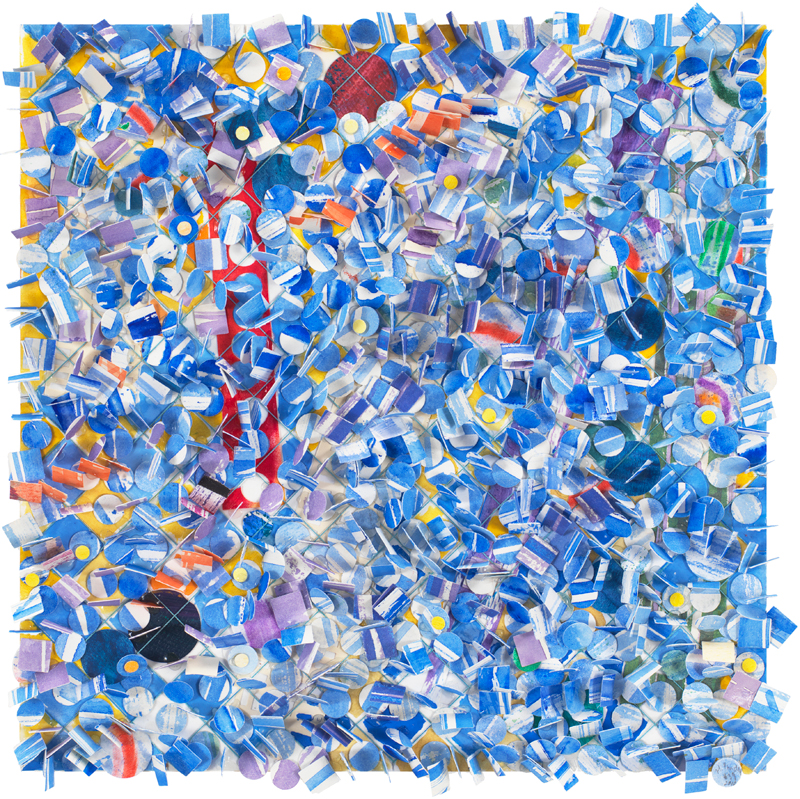
Howardena Pindell, Untitled #59, 2010, mixed-media collage on board, 33 x 33 cm. © the artist. Courtesy the artist, Garth Greenan Gallery, New York and Victoria Miro, London & Venice
Howardena Pindell at Victoria Miro, 5 June – 27 July
So let’s start at Victoria Miro’s Mayfair space, where American artist Howardena Pindell is receiving her first UK show, which seems like an overdue affair considering her six-decade oeuvre. The two series of work presented strive to present the artist’s consistent probing of abstraction’s visual and conceptual possibilities, coming together through the motif of the grid and the circle: the colourful largescale paintings made by spraypainting through makeshift hole-punched ‘stencils’, realised in the 1970s while she was working full-time as an associate curator at New York’s MOMA; and the smaller collage-paintings from the past decade, using the paper chads resulting from the hole-punching that, with the help of wire armatures, seem to be popping out of the canvas like an infinity of pixels. The subtle reference to labour – both through a painstaking process and the evocation of clock-card machines – is one example of how Pindell has used abstraction to explore personal and conceptual issues, showing that abstraction does not equal escapism. In fact, Pindell is also an activist, teacher and researcher, and has written extensively about the racial biases underpinning the artworld – amongst other things. But for more on that, pop by the gallery Friday 28 for a breakfast viewing and discussion led by art historian Dr Anna Lovatt.
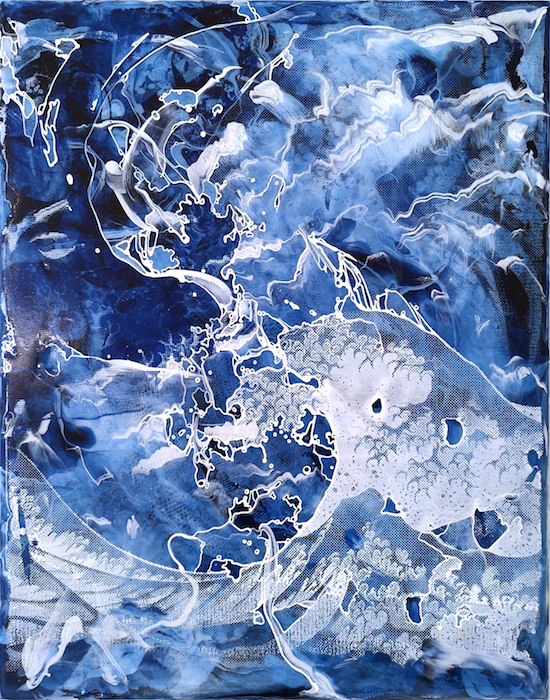
Ann-Marie James at Lyndsey Ingram, 19 June – 2 August
What do Kanagawa Hokusai and Albrecht Dürer have in common? Well for a start they were both masters in printmaking; and second – and that’s in direct correlation to the first – they’re both being appropriated and reimagined in two new series of work by young Suffolk-based artist Ann-Marie James. Confronting herself with the work of her favourite art-historical masters seems to be James’s way of dealing with the weight of art history (a 2015 show saw her channel Alphonse Mucha), and that therapeutic process happens through the repetitive layering (using screen-printing) of a work’s detail pushed to the point of abstraction. The bonus is that the gallery will also be showing an original impression of Hokusai’s The Great Wave (c. 1829), on loan from the Whitworth, perhaps to allow you to better gauge and appreciate the metamorphosis at play here. Now if you feel ready to wrestle with your own idols, James will be leading a screen-printing workshop on Saturday from 11am.
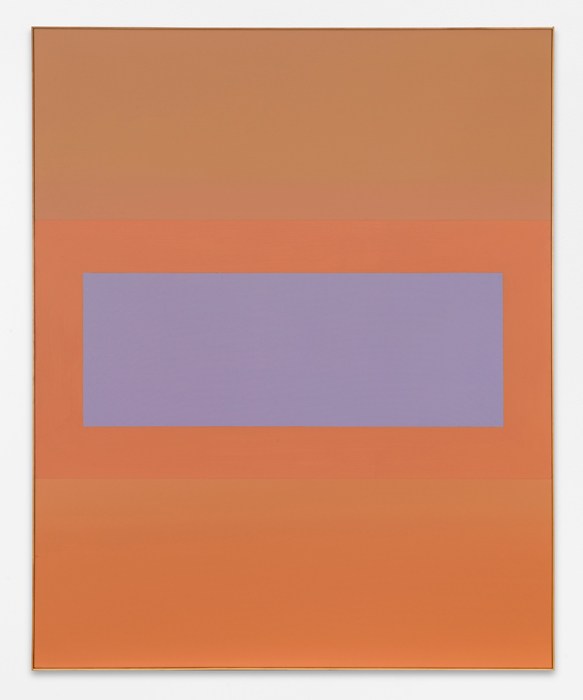
Ulrich Erben at Bastian, 21 June – 10 August
Now head to Bastian Gallery, and immerse yourself in the paintings of German painter Ulrich Erben. Erben started showing in 70s Germany, and was included in influential shows like Documenta VI in 1977 for his experimentations with colour, striking an almost meditative balance through minimal colour-field compositions. Erben too was always aware of his art-historical lineage, citing the tradition of Concrete Art – a 1930s movement championing a geometrical abstraction and its universal potential, founded by Theo van Doesburg after falling out with Piet Mondrian, story has it, over the controversial use of the diagonal in compositions – as an inspiration. At 79, the Düsseldorf-based artist continues his investigation into chromatic interaction, and some of the paintings on view here are likely to bring to mind other genealogies, like the rigorous colour experimentations of artist and theorist Josef Albers in his Homage to the Square. To get the full picture, join journalist Stephanie Dieckvoss and gallerist Aeneas Bastian on Sunday 30 at 12pm for discussion at the gallery.
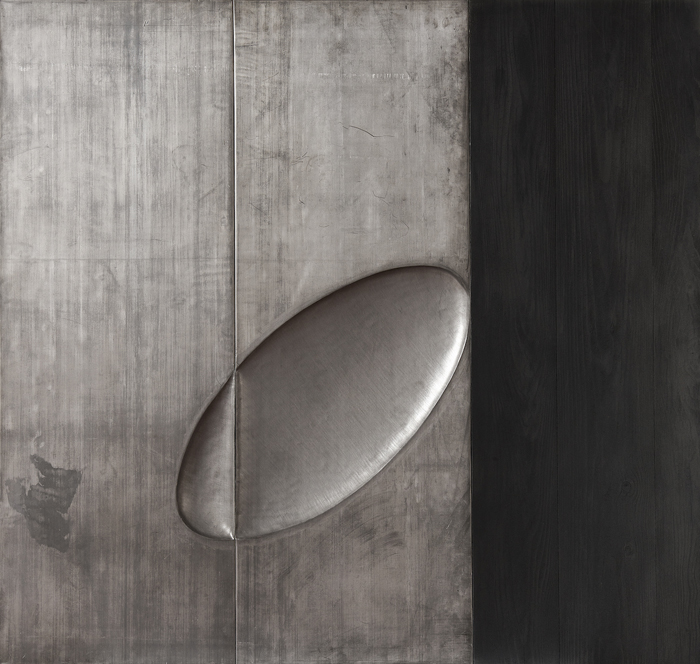
Nunzio: The Shock of Objectivity at Mazzoleni, 7 June – 7 September
After a well-deserved break at Berkeley Square, where you might find yourself meditating on its two-hundred-year-old plane trees as symbols of the continuity of traditions, make your way to Mazzoleni where Italian sculptor Nunzio is receiving his first London solo show. For the occasion, the gallery is presenting works spanning from the late 1980s to now, with a selection of imposing sculptures and wall-mounted panels made of scorched burnt wood and lead which seem to challenge the viewer’s position in the space (which, ArtReview can only assume, is where the title comes from). If you’re wondering whether there’s a connection to be made with the spatial and material inquiries of Minimalism or Spatialism, ArtReview suggest you visit the gallery on Saturday 29 at 12pm, on time for the exhibition tour.
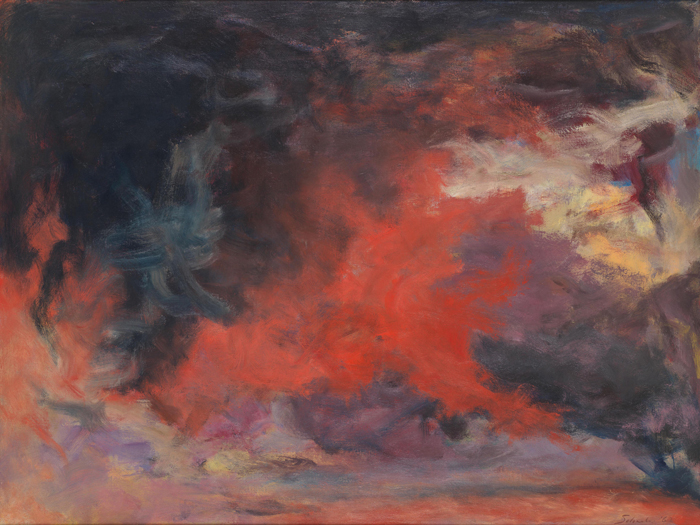
Jon Schueler: Skyscapes at Waterhouse & Dodd, 18 June – 12 July
Back to the two-dimensional for our last stop on this abstract path, with a show by American painter Jon Schueler. From stormy skies with swirling cloud formations rendered in expressive brushstroke to quieter, abstracted skylines, the selection of paintings by this second-generation Abstract Expressionist illustrates the sometimes cloudy boundaries between figuration and abstraction, and how, for many absract artists, the motifs of nature are often points of origin. A student of Clyfford Still during the 1950s in New York, Schueler’s output was decisively marked by a visit to Scotland’s Highlands where he soon set up a studio to which he would travel regularly. A romantic at heart, the Milwaukee-born painter dedicated the subsequent part of his career (up to his death in 1992) to picturing the dramatic ever-changing skies characteristic of the region, rendered with the visual language he developed in New York. The results oscillate between Turner-esque expressions of the sublime, and Rothko-esque, ‘colourfield’ compositions, ultimately coming together in their use of light and colour as a catalyst for emotions.
